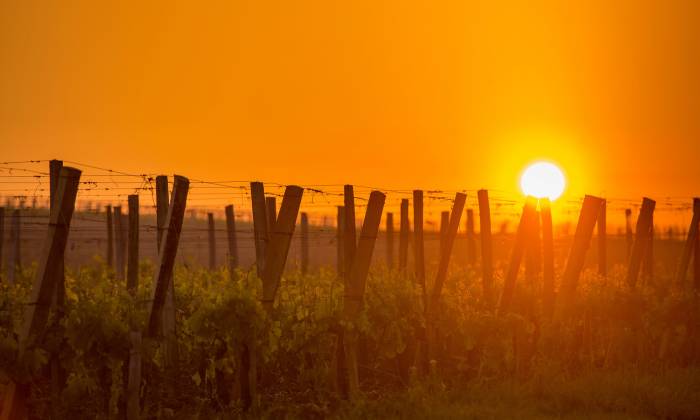
Vineyards in the Mediterranean region face increasing challenges due to warm climates and limited water resources. These conditions make grapevines especially vulnerable to water stress and the broader impacts of climate change. In response, growers and researchers across Europe have developed and implemented a range of innovative practices aimed at improving vineyard resilience and optimizing water management.
One of the most significant advances is the adoption of regulated deficit irrigation and drip irrigation systems. These methods, when combined with advanced technologies such as soil moisture sensors and real-time control systems, allow for precise application of water. This targeted approach ensures that water is delivered during critical growth phases or alternates moisture in the root zone, reducing waste and supporting vine health.
Remote sensing and water harvesting techniques are also being used to further strengthen vineyard resilience. These innovations help reduce overall water consumption, improve grape quality, maintain economic viability for growers, and promote long-term sustainability in vineyard management.
Despite these advances, many solutions remain limited to specific regions or agricultural sectors. The European Union-funded CLIMED-FRUIT project aims to address this gap by collecting and sharing climate-adapted, innovative practices from diverse European farming groups. The goal is to enhance resilience and support effective adaptation and mitigation strategies against climate change.
Experimental results from projects across Europe highlight several key findings. The choice of irrigation system is critical for improving water efficiency. Localized or low-flow drip systems deliver water directly to the roots, minimizing evaporation and limiting weed growth. However, highly localized watering can restrict root system development in depth and breadth, increasing plant dependence on irrigation.
Drip irrigation is widely used in viticulture for its precision and efficiency. It supplies small amounts of water directly to the roots through continuous or pulsed drops or small jets. Studies show that drip irrigation can reduce water demand by up to 50 percent compared to furrow irrigation while also decreasing the risk of waterlogging.
Aerial drip irrigation, where lines are suspended above ground along trellises or wires, offers specific advantages in certain settings. Subsurface drip irrigation has also been tested, with lines buried about 40 centimeters deep in the center of vine rows. This method creates larger wet zones through vertical and lateral percolation without altering vine hydration or yields compared to aerial systems.
Subsurface systems offer several benefits: they facilitate mechanical weed management, improve root expansion between rows, protect pipes from pests and machinery damage, and provide more reliable long-term irrigation. They also support better establishment of cover crops and maintain proper vine hydration in dry areas. Fertigation—applying fertilizers through the irrigation system—has shown improved yield-to-maturity ratios while reducing fertilizer use by about 30 percent. However, subsurface systems are more expensive to install (about 20 percent higher) and may not be suitable for rocky soils. Proper filtration and regular maintenance are essential to prevent clogging and ensure consistent water delivery.
In northern Italy, the VIRECLI operational group implemented precision irrigation systems in vineyards producing grapes for sparkling wine. By optimizing water use based on detailed soil analysis—including electrical resistance mapping—they divided vineyards into homogeneous zones with similar hydrological properties. Variable flow rates were then applied according to each zone’s needs using decision support systems (DSS) that integrate soil moisture data, plant requirements, and weather forecasts.
During severe drought years in 2021 and 2022, low-vigor zones irrigated with precision methods produced 15 percent more grapes per plant than similar zones using standard drip systems. Variable-rate management saved about 15 percent more water while better meeting each plant’s needs.
In southern Italy’s Apulia region, table grape vineyards have adopted interconnected sensors at both soil and crop levels. These sensors communicate with DSS platforms tailored for organic table grape production, helping optimize water use during critical periods of scarcity. Data collected by Internet of Things (IoT) devices is managed through specialized software like Blueleaf®, allowing seasonal tracking of water use based on local weather data. This approach has resulted in water savings of 30 to 40 percent without compromising crop yield or fruit quality.
Over the past two decades, rising temperatures have increased evapotranspiration rates, leading to significant water stress in vineyards throughout Europe’s Mediterranean basin. Precision irrigation offers a sustainable long-term solution for optimizing water consumption when resources are available. These approaches help ensure consistent production of high-quality grapes and wine even during challenging years by enabling efficient resource management tailored to each vineyard’s unique conditions.

Dining and Cooking